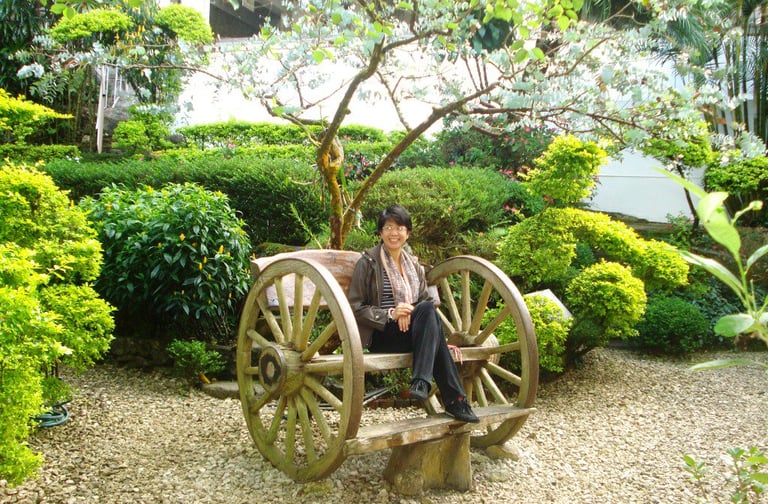Creative Writing the Environment in the Philippine Context
WRITING AT WORDHOUSECREATIVE NON-FICTION


Philippine Island Narratives: Our Climate, Our Environment, Our Stories
We’ve lived through countless storms, this is a big part of our story as Filipinos. Writing about life in this archipelago, whether we live close to rivers and oceans, tucked within mountain ranges, or surrounded by dominoes of skyscrapers, becomes one of our best responses to a changing climate.
Each time we write about how we’ve weathered both drizzles and torrents, we’re doing more than remembering, we’re memorializing this setting of our lives, this island world that holds our moments. To write it is to celebrate its islandness, to keep alive the story of how we live and move with the sea, the wind, and the rain.
We Become as Climate Forms Us
In our personal stories, weather is never just weather. When we say “weather-weather lang ’yan,” it’s more than a tongue-in-cheek expression, it’s an acknowledgment that we live and breathe within the rhythm of monsoons, mindful of earthquakes and volcanic moods.
To grow up on these islands is to brave storm signals, bakwit stories, floods, and landslides that keep reshaping our countryside. Many of us even keep an emergency bag ready for evacuation, though we often fail to sustain the habit, maybe out of stubbornness, or because calamities have become so familiar they almost feel routine.
Our language beams with this closeness to the elements. We’ve woven the weather into our idioms and daily life: bagyo ng buhay, umambon ng biyaya, alon ng alaala, parang bulkan kung magalit. The climate has always been both companion and trickster, deceiving us with calm, then surprising us with sudden shifts. To live here is to stay watchful, to keep taking note, and to keep telling the story.
How We Write Our Weather to the World
When we write about the weather, we’re really writing about memory, what we’ve lost, what we’re holding onto, what we still hope to keep. Each coastline we describe remembers how the sea slowly ate its own edge. Each storm carries stories of those whose heartbeats stopped, or who stopped us from breathing when landslides or tsunamis buried not only lives but memories.
We keep trying to put these moments into words, to name what it means to cling to life while the world keeps shifting. In our writing, the climate is no longer a backdrop or a side note; it has become the main lead in our story. The environment isn’t something we simply describe, it must breathe through the language itself.
So when we write, we write with the tide and the tremor. We listen and move with them, because nature is not merely a setting, it is the living theater of who and what we are.
How we Remember
I think about one rainy season, when flood travelled through the highways and entered our apartment. But the memory wasn't much about the flood, it was more about my mother. I remember a typhoon named after a male, the first time they did that since typhoons used to be named female in this island, how I was trapped inside my boarding house, forced to buy food from floating-store-foams, instantly created after a deep flooding covered all first floors of every house in the city. And I remember another time, when lining up for a ride going home, my umbrella was blown away beyond recovery since the highway was too foggy with surging winds, and rainfall tap danced in torrents.
The books below do not merely remember a homey experience, but have also taken careful note of each place, honoring how lives have been shaped by the island forces. Description of the landscape somehow traces every flawed stewardship that eventually resulted in catastrophes:
V.J. Campilan, All My Lonely Islands – solitude and sea in Batanes
Merlinda Bobis, Fish-Hair Woman – Bicol’s magic, loss, and love
Clarissa Militante, State of Happiness – stories of land and community
Genevieve Asenjo, Orkidyas – women, islands, and resilience
Dinah Roma, Weaving Basey – poetic remembering of Typhoon Haiyan
Criselda Yabes, Broken Islands – aftermath and rebuilding after Yolanda
As I read these books, I feel a deep connection to the islands, and I remember that I am but a tiny speck in the vast geography of the world. In writing, I owe it to my vocation not to shrug off the shifts and changes of the environment, but to notice them, acknowledge them, and honor them.
How then Do I Write My Island Story
I think the question isn’t just how, but why. I realize that weather, the tides, the storms, the rains, is not a prop for my stories. It is a teacher, a companion, and sometimes a provocateur, nudging me to pay closer attention, to listen harder, and to write with care.
I think writing about climate change is about embracing uncertainty. It is noticing what is fleeting, what is persistent, and what shapes the spaces we move through. It is noticing how the wind shifts unexpectedly, how rain changes the shape of streets and fields, and how the earth moves beneath me in ways I cannot ignore.
I think that to write about a place is to be generous toward those who live with its shifts, and toward future readers who will learn from both its language and its landscape. It requires patience, keen observation, and humility: an awareness that any written piece is only a small part of a much larger story unfolding around me. I also recognize that my personal story cannot be the only story.
I think writing the island is to do so with attention, respect, and curiosity. I try to let it teach me, move me, and challenge me. In telling my island stories, I hope to honor both the place and the lives it holds, giving shape to its rhythms and its challenges, and bearing witness to what endures.
Subscribe to our newsletter
Enjoy exclusive special deals available only to our subscribers.


